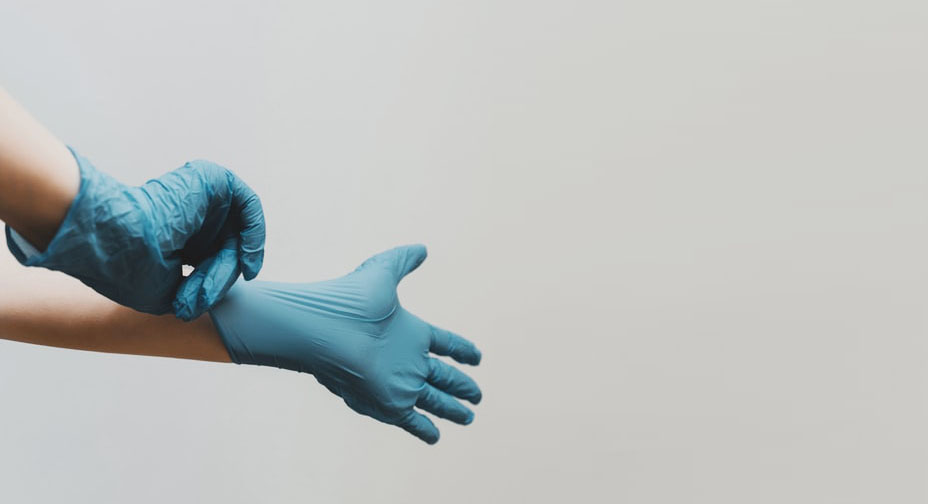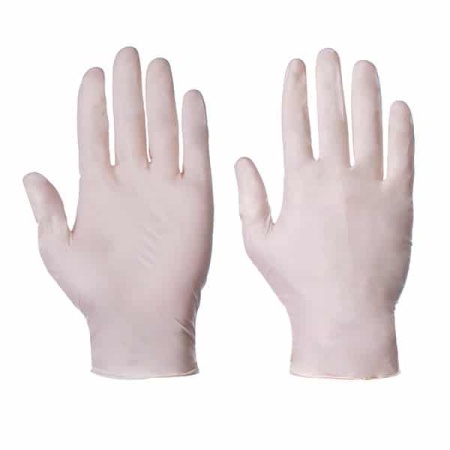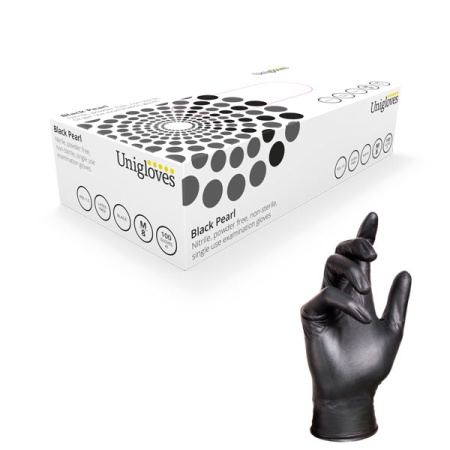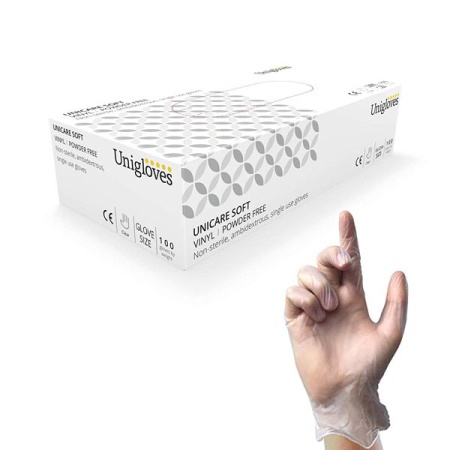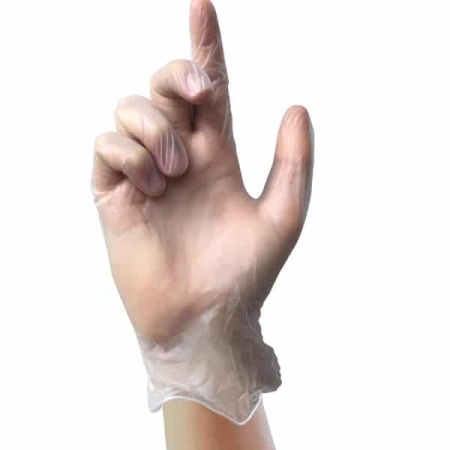Disposable Gloves: The Ultimate Guide
Disposable gloves are one of the most versatile types of work gloves. Used in a wide range of industries, ranging from healthcare, to catering, mechanics and much more, they’re also a household essential for many DIY’ers or hobbyists. An essential part of many business’ and corporations essential PPE wear, thousands of pairs are used across the country on a daily basis. In fact, their use is so varied that we even dedicated a blog post to some of the more unusual uses we’ve uncovered for disposable gloves – which makes for quite an interesting read!
Whether you’re about to place your first ever order of disposable gloves, and are looking for a bit of guidance. Or maybe you’ve been ordering the same box of disposable gloves for years, and are wondering if there’s something better suited out there for your needs? Before you decide to bulk-buy your disposable gloves, we recommend first understanding the benefits that the different materials can offer. A lot of users don’t realise that there are any differences between the gloves at all, which is why it’s so important to do your research.
We’ve compiled this ultimate guide to disposable gloves which includes everything you need to know about disposable gloves into one, easy to digest, blogpost. You’ll find useful information on the pros and cons of each different material, as well as their most popular uses. We’ll also cover how to use these gloves most effectively to prevent cross contamination, including the correct way to put on and remove your gloves.
Latex Gloves
Rubber latex gloves were once the undisputed champion of disposable gloves, but due to an increasing number of the population being affected by a latex allergy, demand for these gloves has slowly started to decrease. However, they are still a great option for those of us who are not affected by allergies.
Pros
- Very tactile and flexible, allowing the wearer great range of movement when carrying out fiddly tasks
- Protects wearer from biological or water-based materials
- Incredibly cost-effective and affordable
- Designed to fit like a second skin
- The only naturally biodegradable option – so the most environmentally friendly disposable glove
Cons
- Cannot be used by anyone with an existing latex allergy
- Latex allergy can develop after prolonged contact with latex – so it’s worth keeping an eye out if you use these gloves regularly for work
- Don’t offer great protection against chemicals including solvents
- Won’t provide resistance to punctures
Most Common Uses
- Food preparation and service
- Household chores and cleaning
- Industrial
- Cleaning and janitorial work
- Laboratories
- Pet grooming and care
Nitrile Gloves
Overtaking the top spot for the most popular disposable glove has to be nitrile gloves. Made from a hypoallergenic material, these single use gloves are the perfect choice for anyone needing to avoid latex. But they’re also a great all-rounder!
Pros
- Naturally hypoallergenic – great for anyone with allergies, sensitive skin or pre-existing skin conditions, such as eczema or psoriasis
- Resistant to punctures, these gloves are durable if working with sharp tools or materials
- Provide protection against most chemicals
- Mould to your hand providing you with a comfortable fit
- Very long shelf life
Cons
- Not the cheapest disposable glove due to the costs involved in manufacturing this synthetic material
- Aren’t the most eco-friendly due to how long they take to degrade
Most Common Uses
- Mechanics and automotive industry
- Beauty, hair and aesthetic salons
- Industrial
- Cleaning and janitorial work
- Laboratories
- Tattoo parlours
Vinyl Gloves
Another widely used single use glove, vinyl gloves are quite different to nitrile and latex due to their looser fit. However, this does mean they’re far quicker to put on and take off!
Pros
- Cost effective and very affordable
- Free from latex
Cons
- The least durable material out of the three
- Fit loosely, so do not offer as much dexterity
- Are prone to punctures
Most Common Uses
- Food preparation
- Manufacturing
- Medical and dentistry
- Mechanics and automotive industry
- Industrial
- Cleaning and janitorial work
Powdered or Powder Free?
Once you’ve decided which material gloves best suit your requirements, there’s one further question you need to contend with. If you’ve chosen either latex or nitrile, then you’ll need to decide between powdered or powder free gloves? If you’ve never used disposable gloves before, or have loyally stuck to one type, then it’s difficult to understand whether powdered or powder free are the better choice for you.
Let’s take a look at the main differences between the two.
Powdered Gloves
- If you’re wearing your gloves for an extended period of time, you may find your hands get clammy. Powdered gloves will keep your hands dry
- However, if you’re prone to dry, irritable skin, or have pre-existing skin conditions, powdered gloves can dry your skin out even more
- Powdered gloves are easier, and therefore quicker, to put on
- Tend to be more affordable than powder-free gloves
- However, if you want resistance against water, oil and chemicals, then we’d recommend powder-free gloves
Powder Free Gloves
- Stronger and more durable – making them ideal for tough industries
- Lack of powder reduces the risk of contamination, vital in all food industries
- More friendly and kinder to skin
- Can be harder to put on and take off, especially if you’re in a hurry
- Are more expensive due to the manufacturing process
We hope these pointers have helped you decide which gloves will be best suited for you. It can really seem like a minefield at first, a huge variety of materials, colours, and sizes, but once you understand the basics, you can’t go wrong.
Now we’re going to take a look at how to ensure you’re using disposable gloves in the right way to avoid cross contamination. This includes the correct way of putting on and taking off your gloves. Continue reading our guide to disposable gloves below.
Wearing disposable gloves to prevent cross contamination
When it comes to preventing cross contamination, if disposable gloves aren’t used correctly they can actually prove ineffective and can even contribute to further contamination. However, so long as they are used in the right way they remain highly effective – which is exactly why they’re used in such high sterile environments. Let us take you through the steps you can take when putting on and removing your gloves, to ensure you don’t contribute to further contamination.
How to safely put on and remove disposable gloves
- Thoroughly wash hands with soap for a minimum of 20 seconds
- Find the right size glove for you
- Hold glove with one hand and carefully insert the other hand
- Pull the cuff of the glove towards your wrist, covering as much of your wrist as possible
- Check for any holes or tears which may have occurred during application
- If you’re happy, then repeat steps 1-5 for your next hand
Washing your hands before applying gloves may seem pointless, but it’s actually one of the most important steps. If your hands are covered in bacteria, then applying a glove is essentially going to create the perfect environment for that bacteria to multiply and spread. This can be incredibly dangerous if you then experience an unexpected tear or split in your gloves.
It’s also crucial to remove your gloves in the correct way, following the steps below, if you want to ensure that cross contamination does not occur.
- Pinch one glove by the wrist, using your other gloved hand
- Pull the glove away from your hand
- Continue holding the removed glove in your still gloved hand
- Slide a few fingers of your bare hand inside the cuff of the glove
- Push the glove away from your hand, slowly turning it inside out to wrap the first glove inside of it
- Dispose of the used gloves safely and thoroughly wash your hands with soap
If you own a business with staff who need to regularly wear disposable gloves in the workplace, we’d highly recommend printing handouts or posters with these simple steps on. It’s all crucial to ensure that all new starters, or anyone new to wearing disposable gloves, is shown the correct techniques.
We hope you’ve found our ultimate guide to disposable gloves useful. Purchasing gloves can feel like a huge task, so if you have any more questions our friendly team are more than happy to answer them for you. Email us at [email protected]. But if you’re feeling confident and ready to shop, then why not take advantage of our great bulk buy discount scheme?



